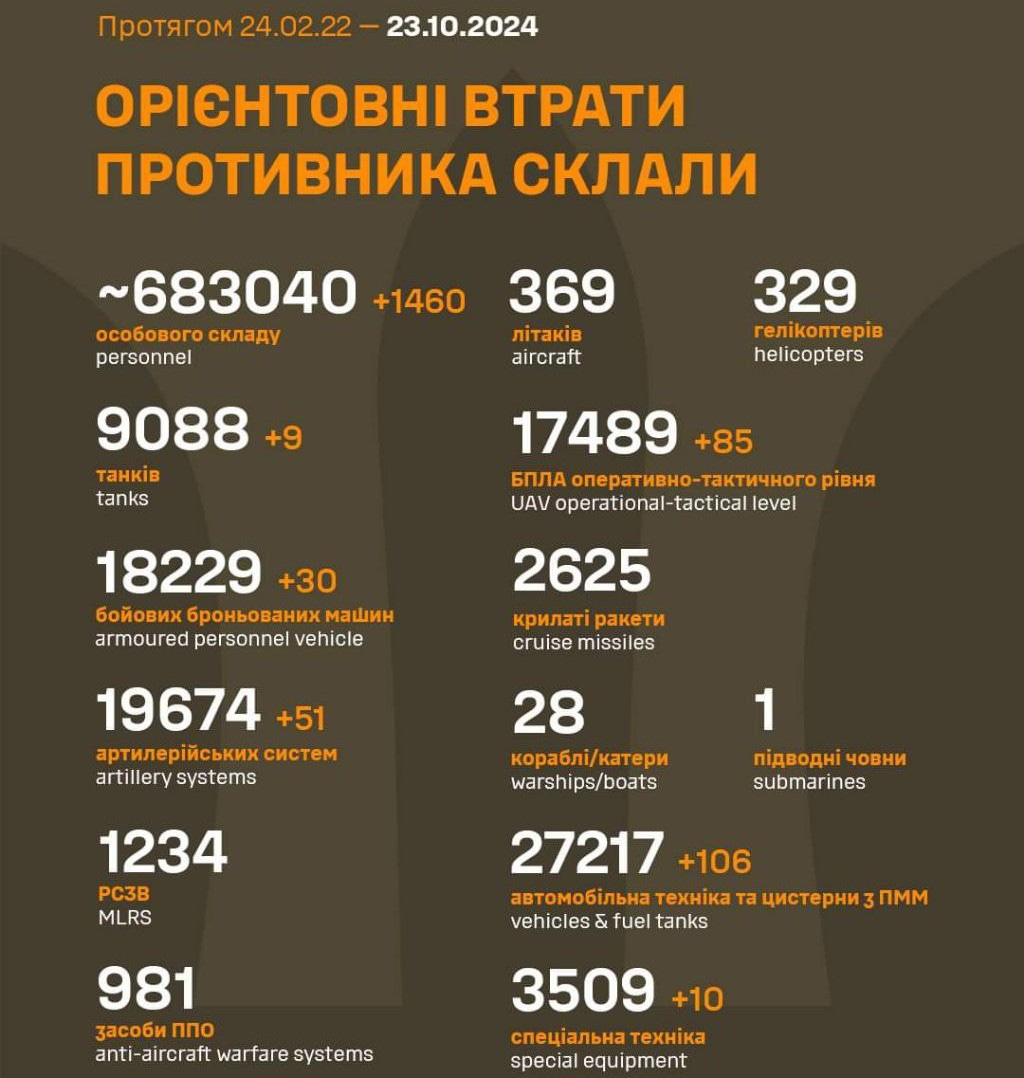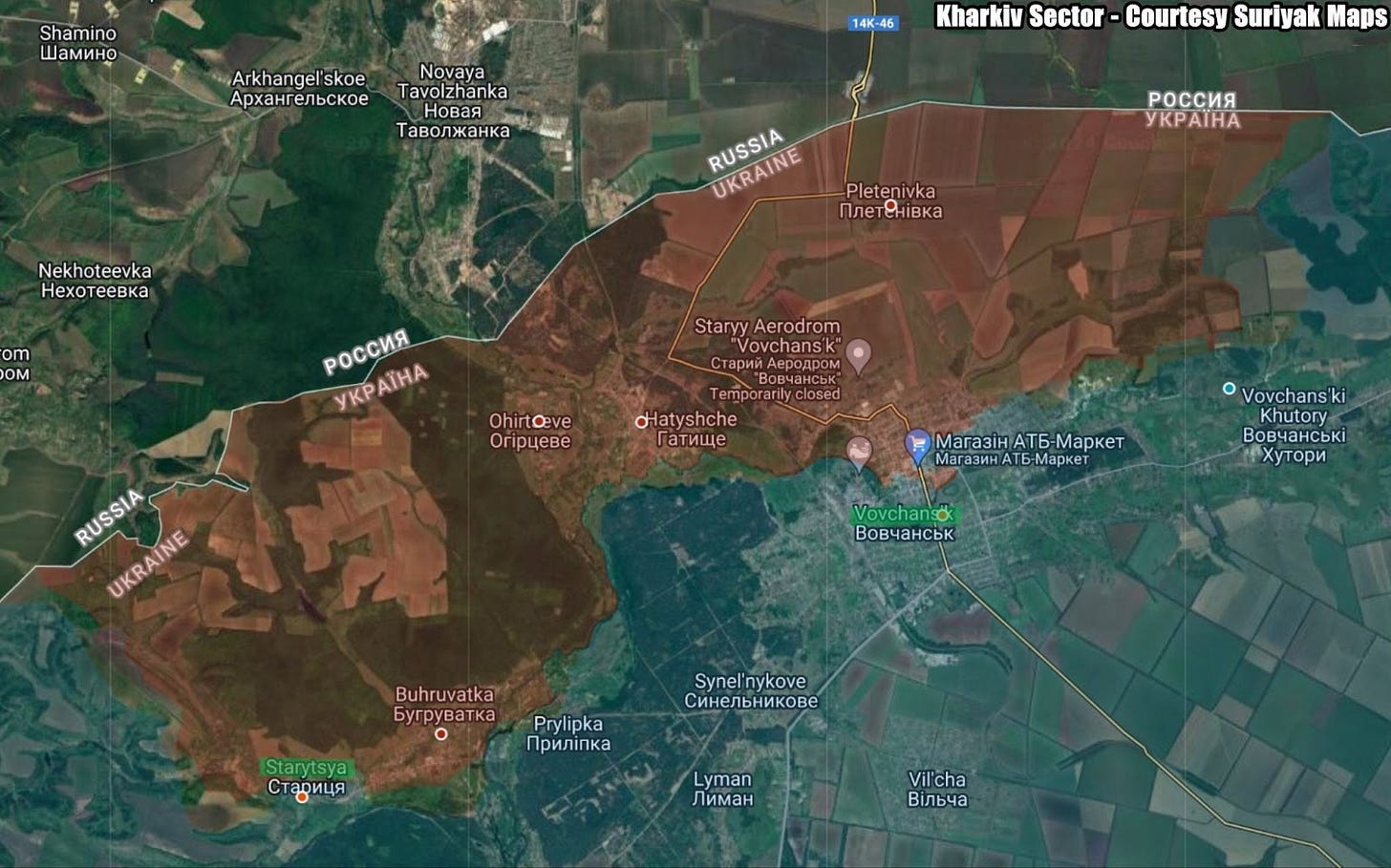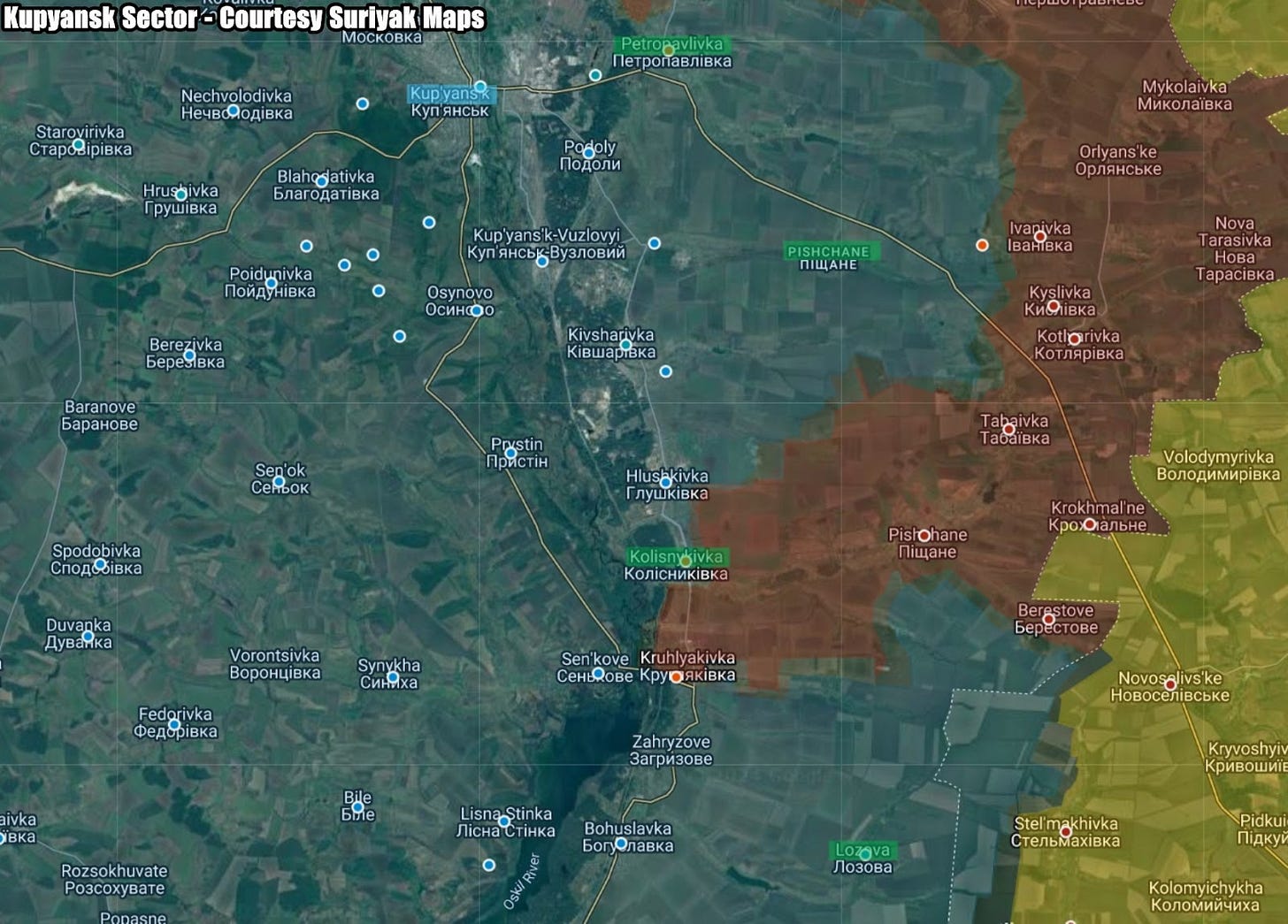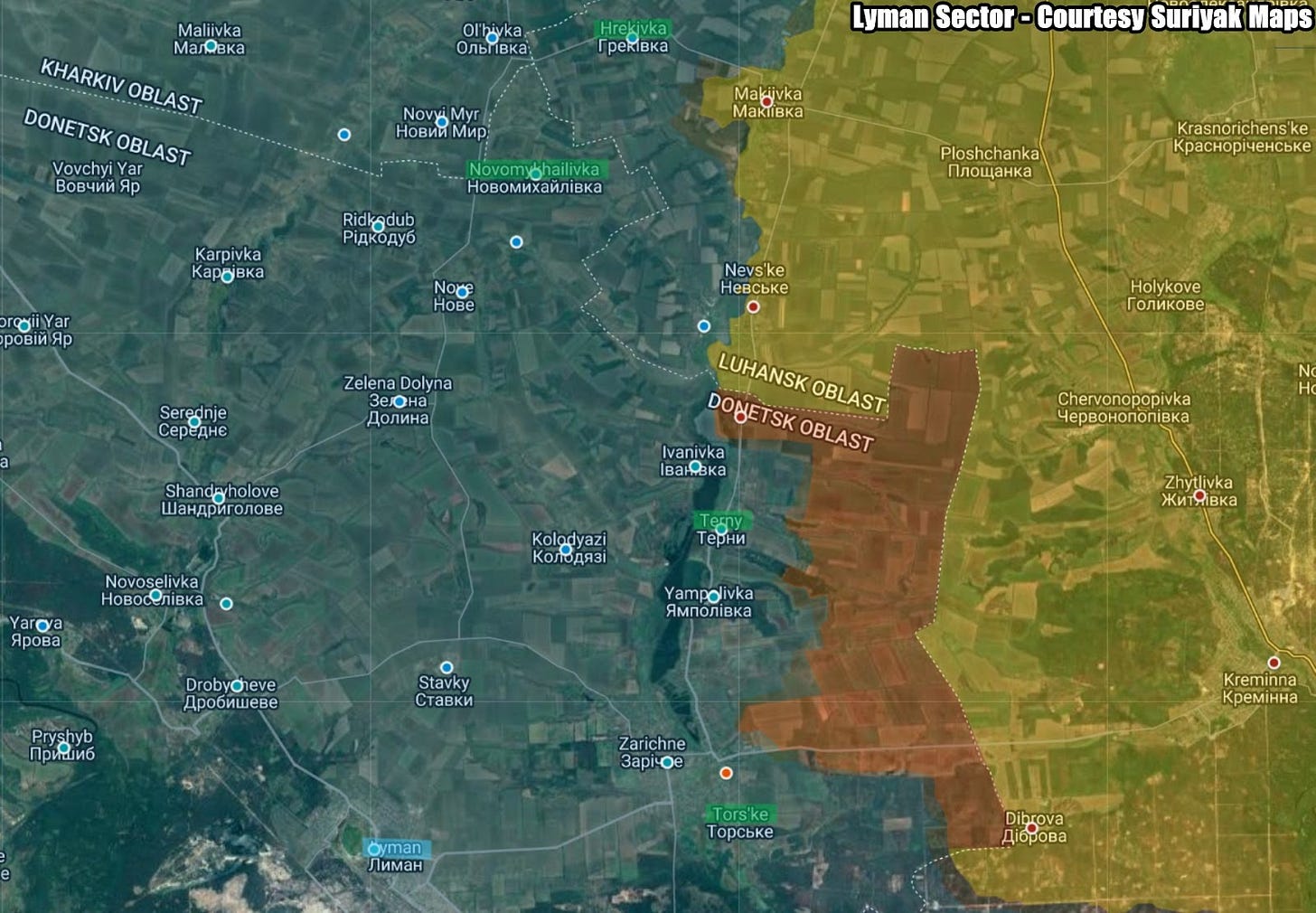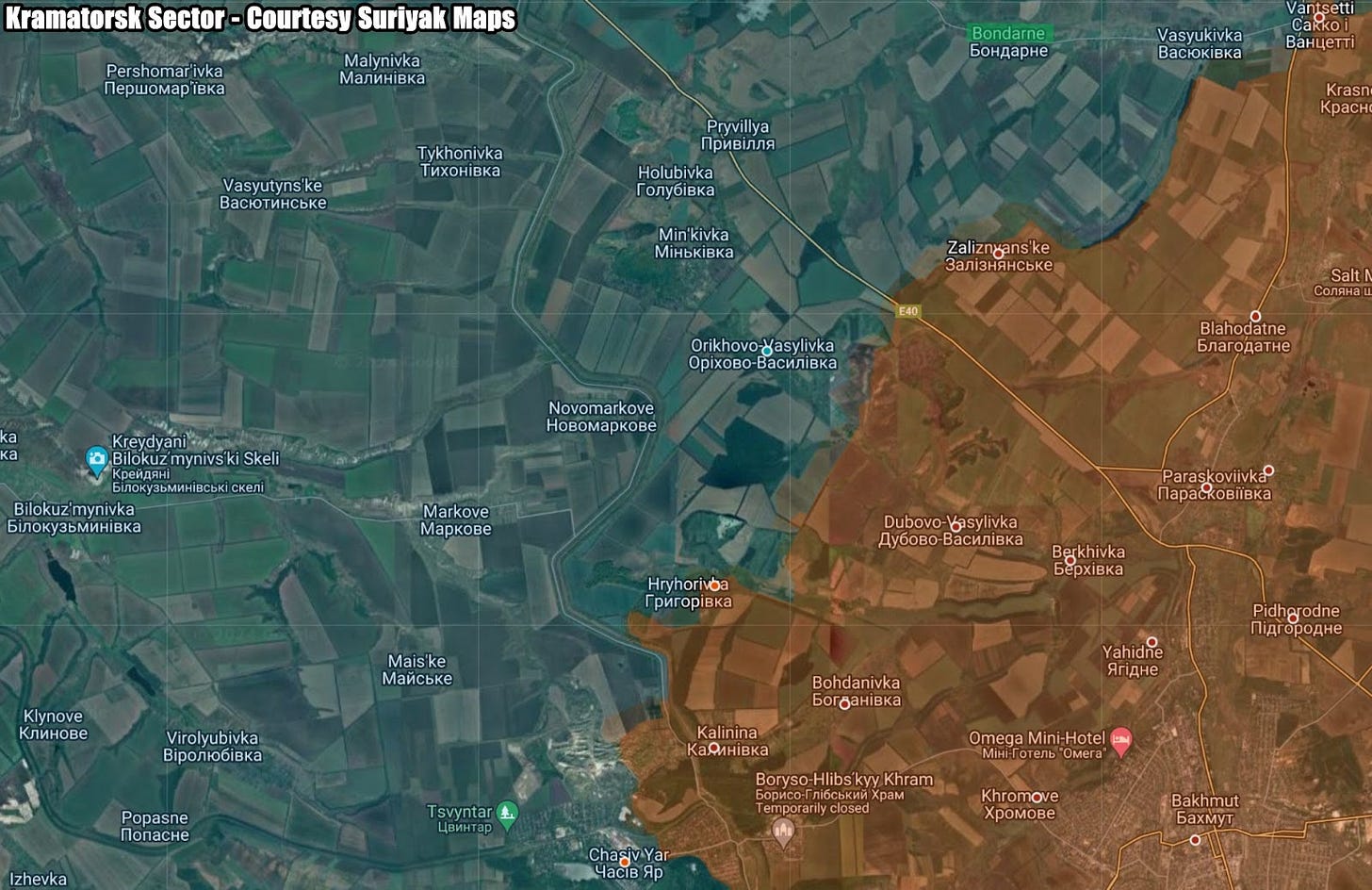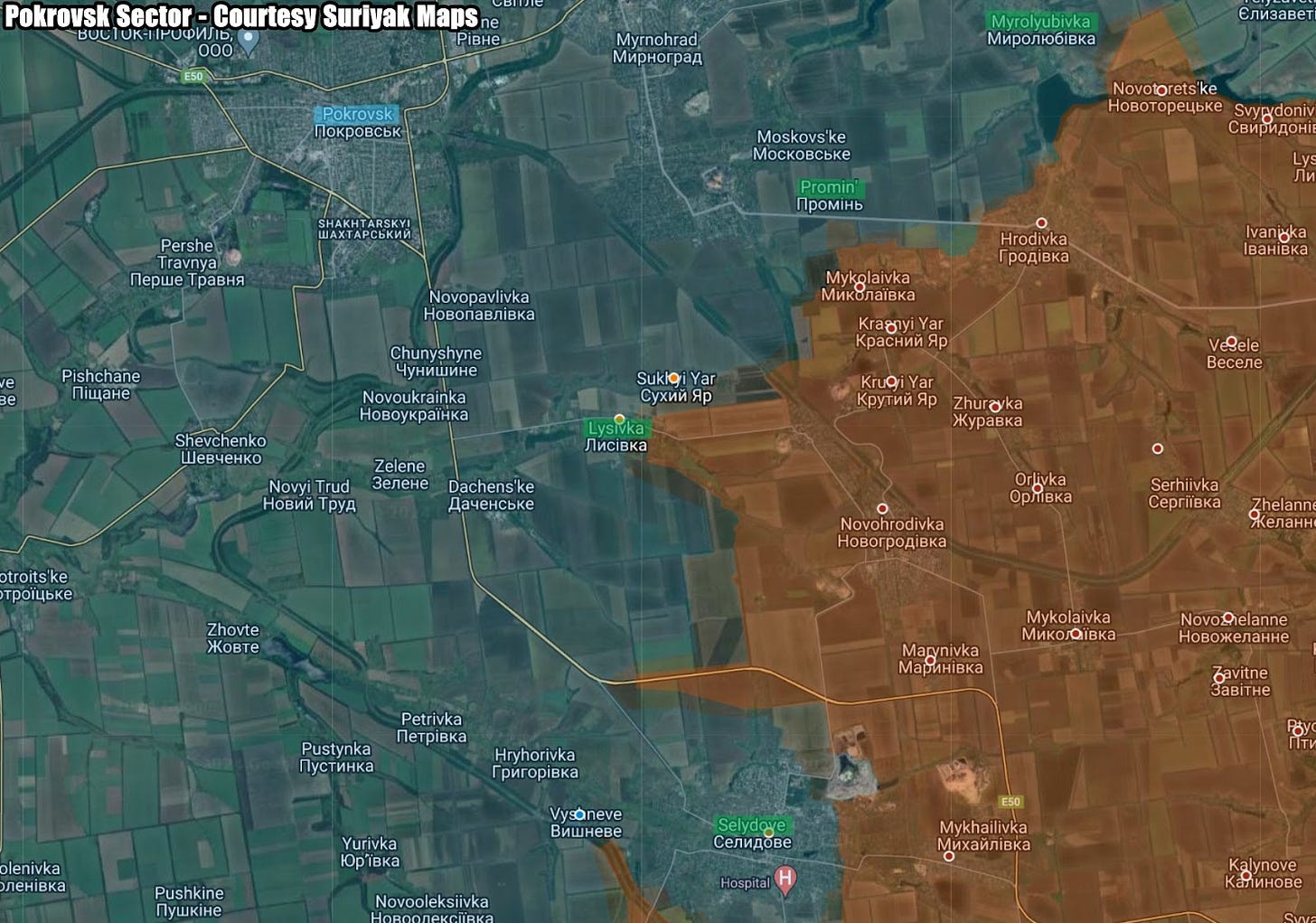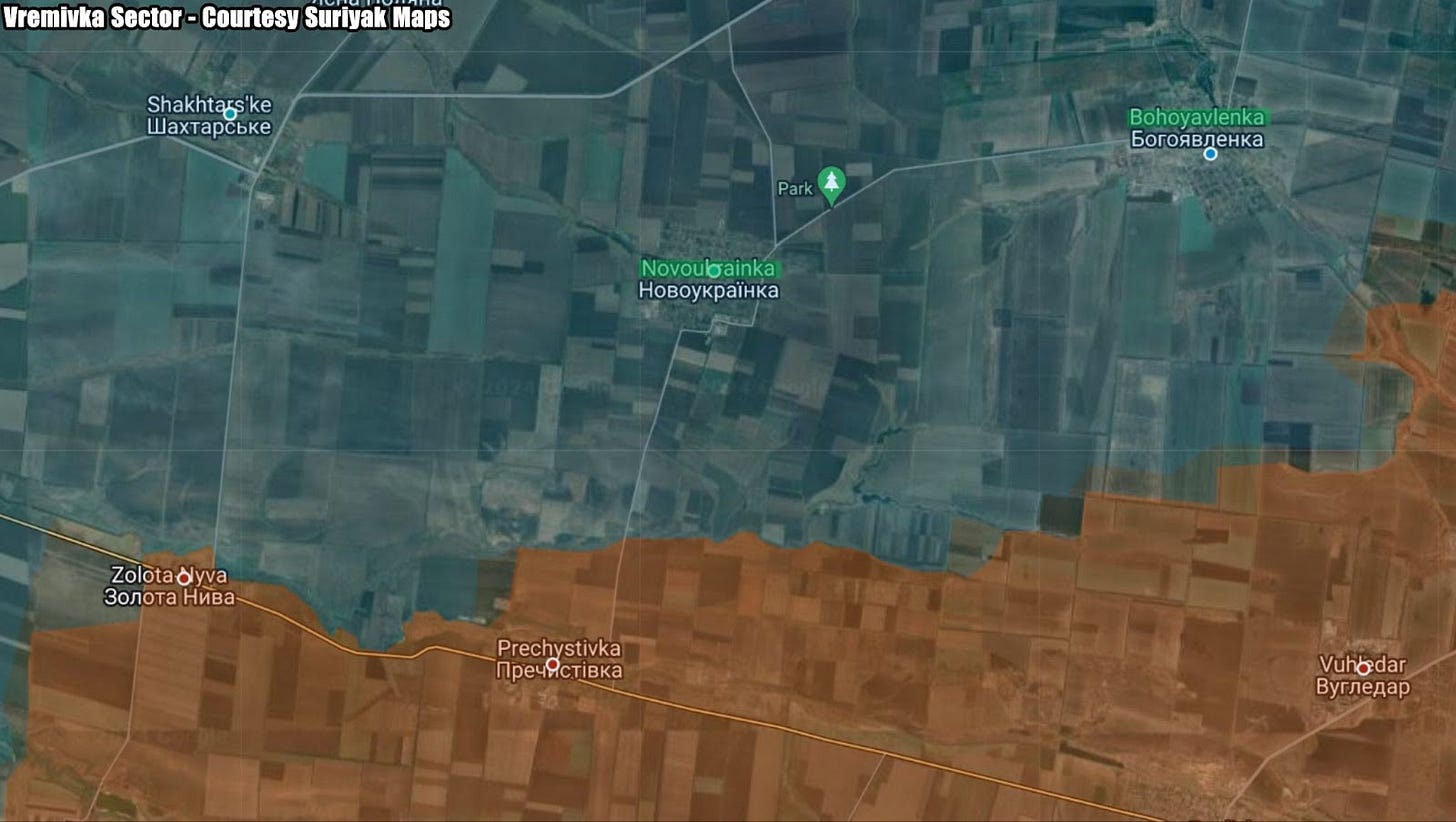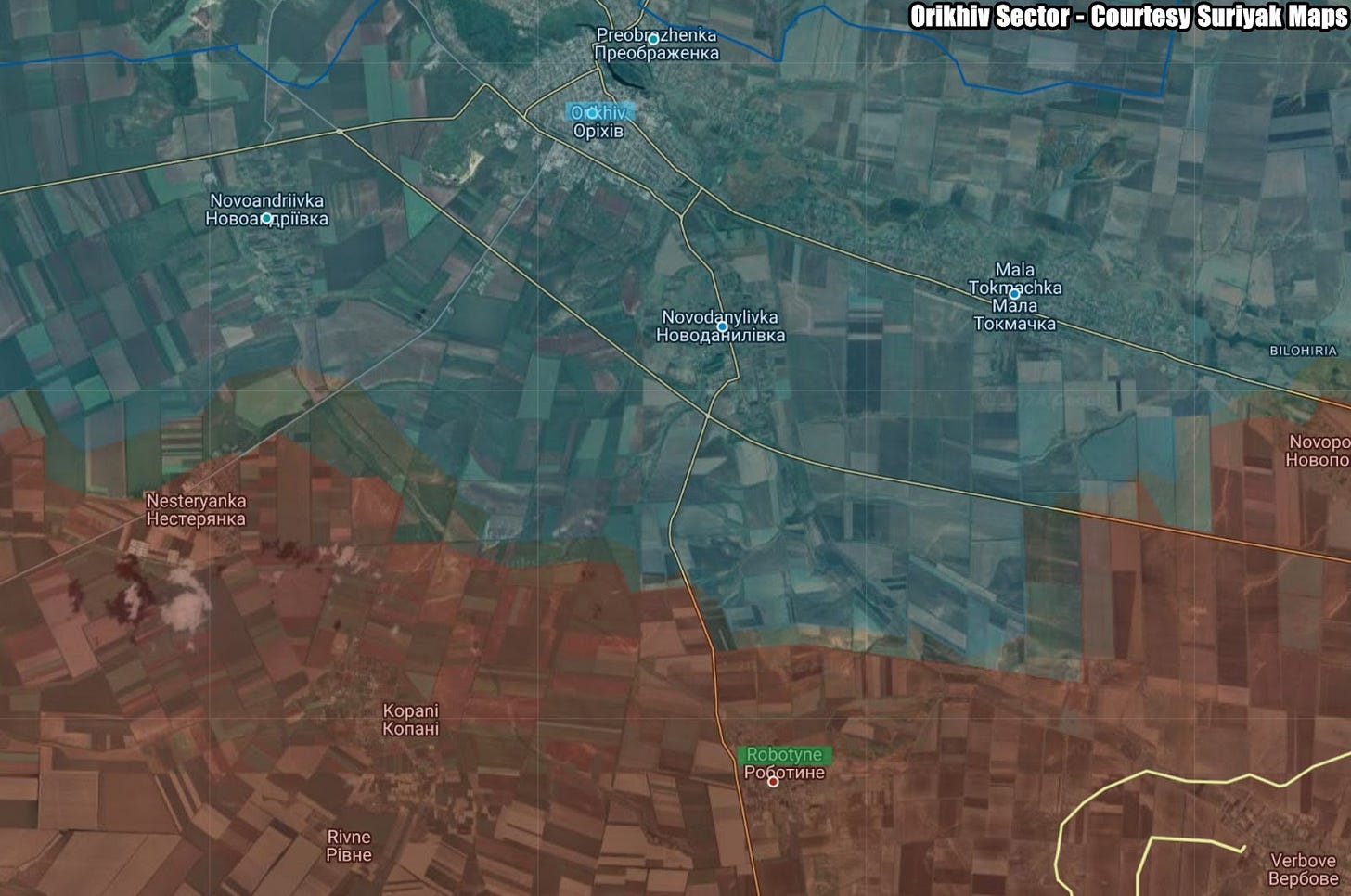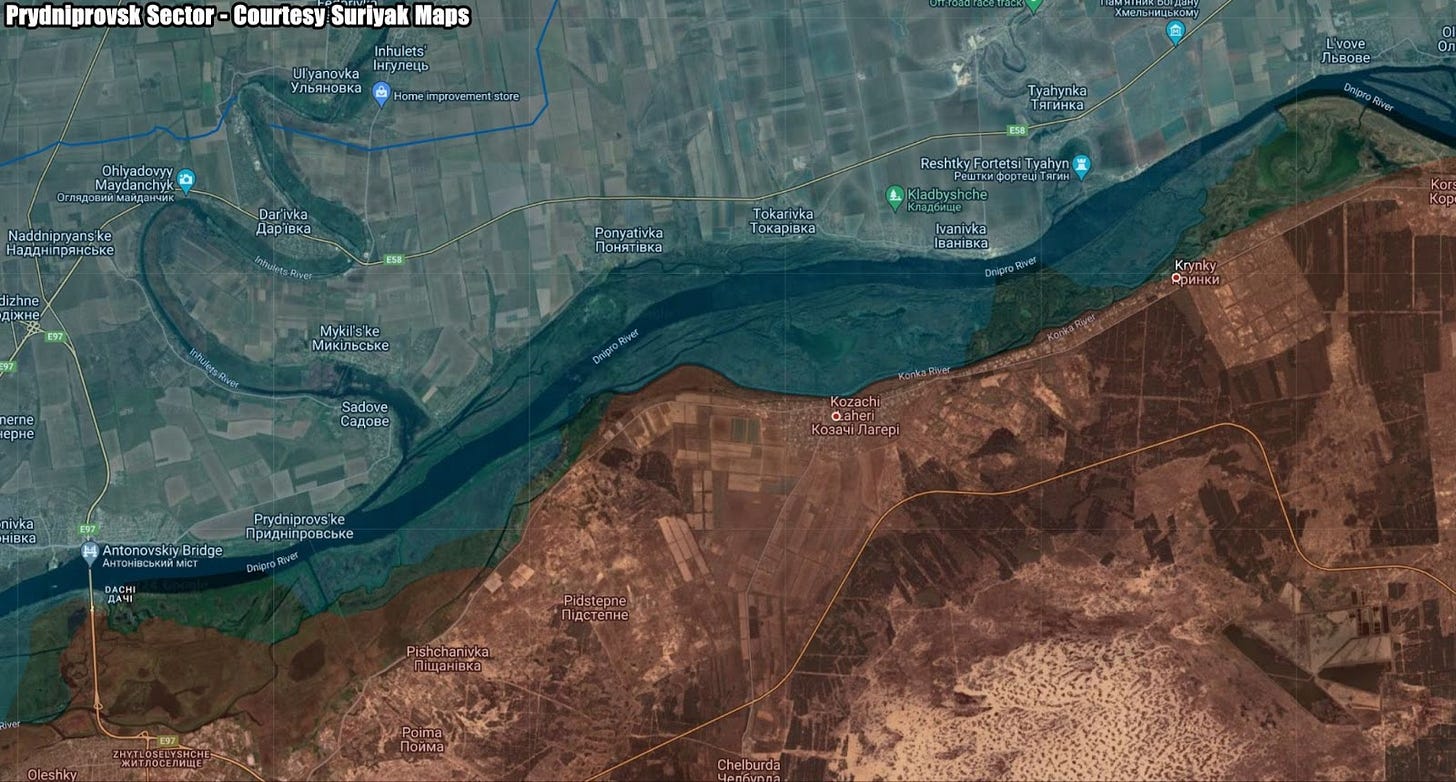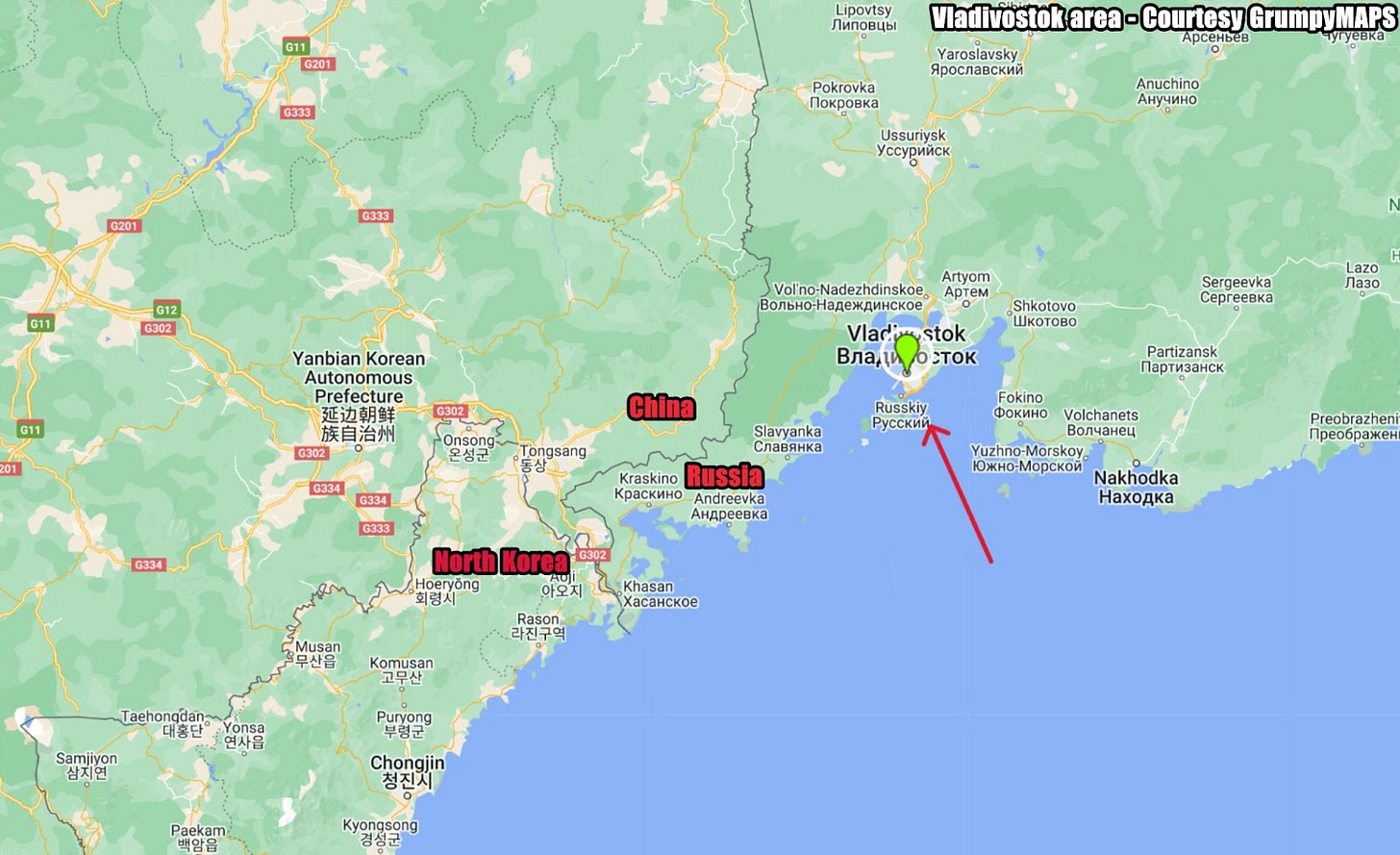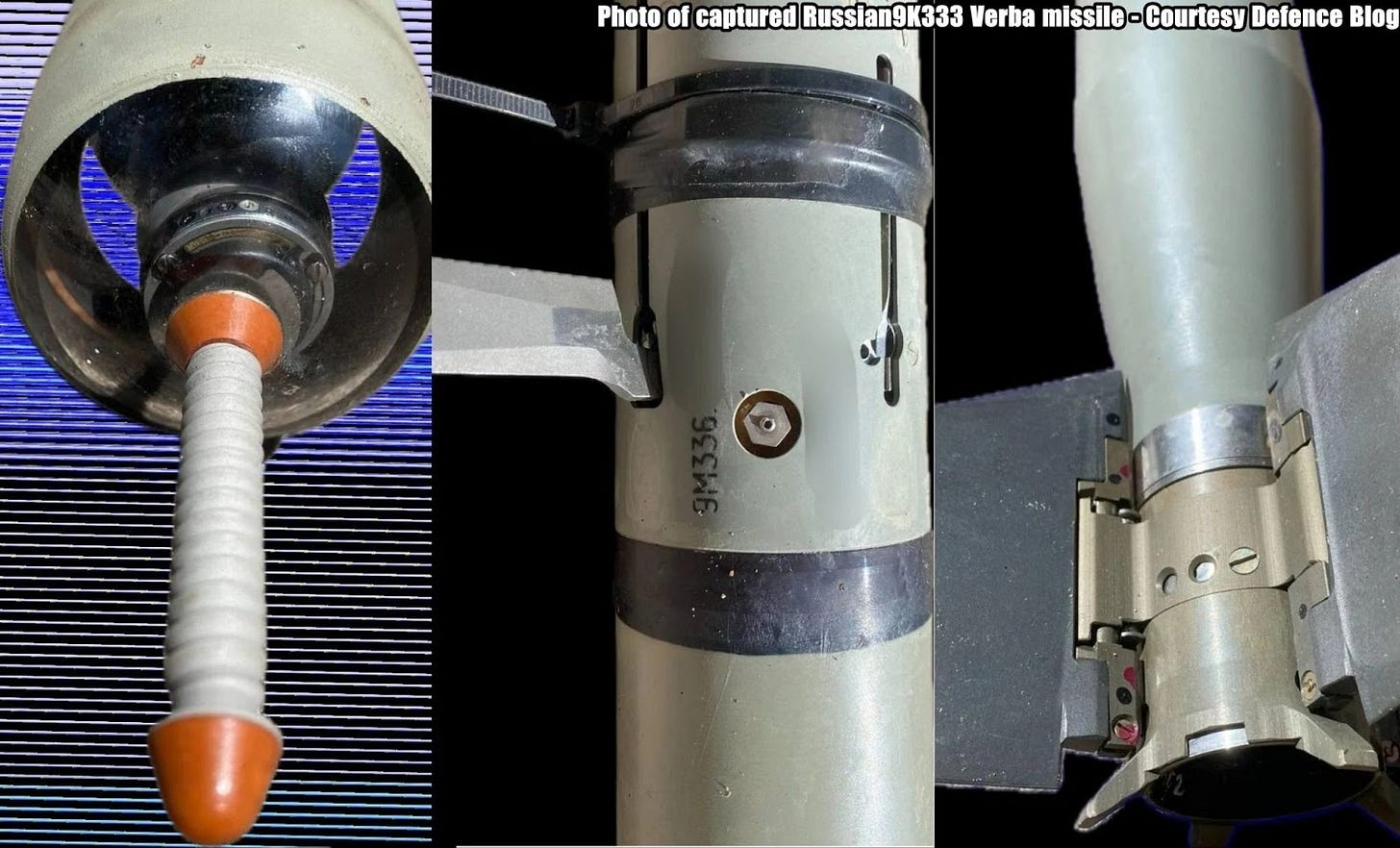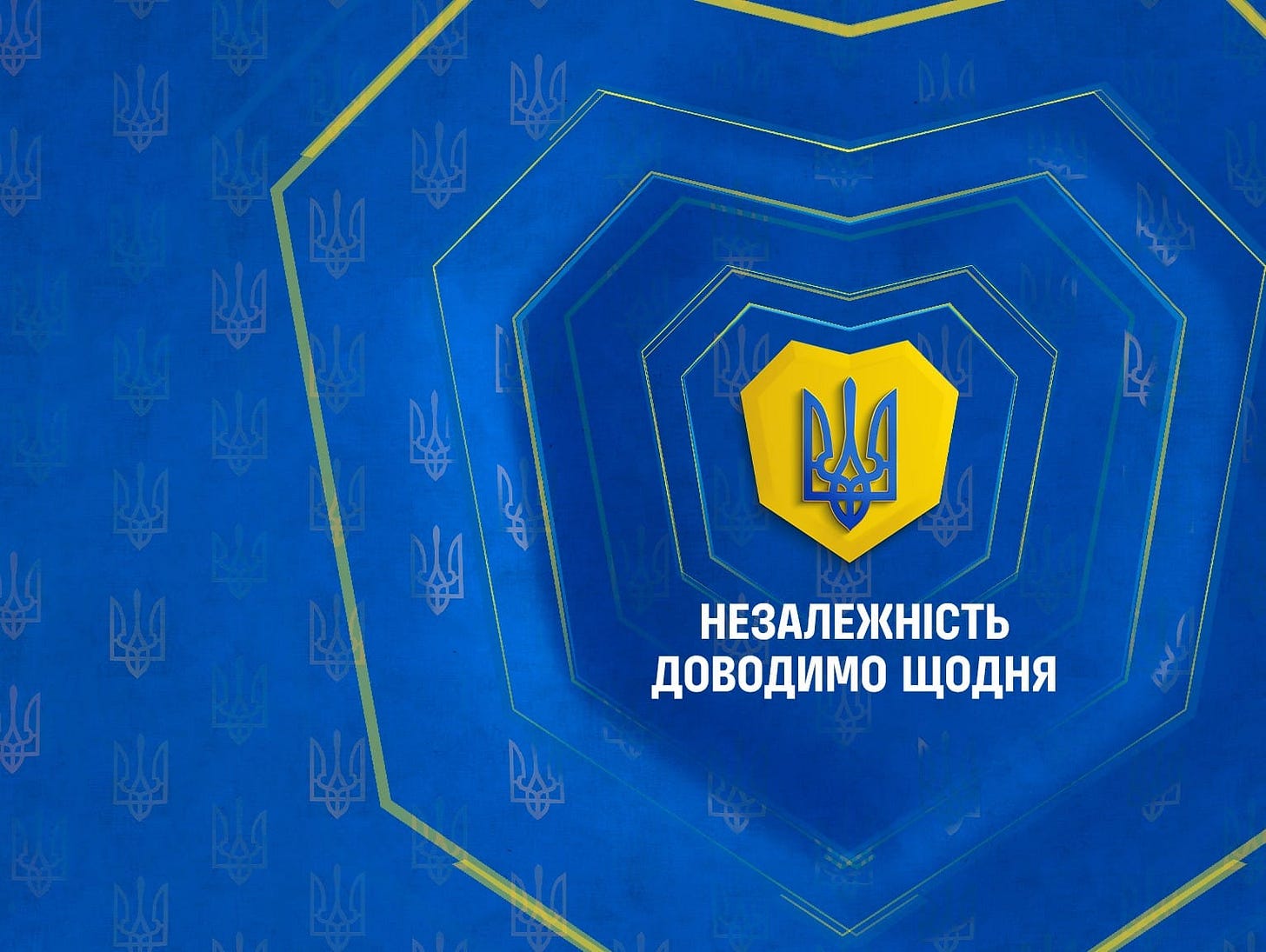Slava Ukraini! In early 2022 I began a Telegram channel aggregating news from a number of sources daily on the war in Ukraine. In June 2023 I began providing a daily draft for the Ukraine War Brief Podcast collecting news from over 70 sources daily, much of which formed the basis of the script. While the Podcast no longer exists I have continued to make this Brief available both on my own Substack and The People’s Media for those who wish to keep up with events on a daily basis.
All the latest news on the Russo-Ukraine War 6 days per week
ALONG THE CONTACT LINE
GSAFU Morning Report
The General Staff of the Armed Forces of Ukraine in its Operational Information update at 22:00 on Oct 22 stated that day 973 of the full-scale invasion of the Russian Federation against Ukraine was about to begin.
During the past day, 122 combat engagements took place. Over the past 24 hours, the enemy carried out 70 air strikes, 718 drone strikes and more than 3,200 artillery strikes across the positions of Ukrainian forces.
At the same time, Ukrainian soldiers continue to inflict losses in manpower and equipment on the occupying troops, exhausting the enemy along the entire front line and continue to disrupt the plans of Russian occupiers to advance deep into the territory of Ukraine.
Air Force Daily Report
On the night of October 23, 2024 (from 10:00 p.m. on October 22), the enemy will attack Ukraine with 81 attack UAVs of the "Shahed" type and unmanned aerial vehicles of an unknown type from the directions of Primorsko-Akhtarsk, Kursk - Russia. The enemy also attacked Odesa with an Kh-31P guided missile from the Black Sea.
The air attack is repulsed by aviation, anti-aircraft missile forces, electronic warfare units and mobile fire groups of the Air Force and the Defense Forces of Ukraine.
As of 9:00 a.m., 57 enemy UAVs were shot down in the Odesa, Mykolaiv, Vinnytsia, Sumy, Cherkasy, Khmelnytskyi, Ternopil, Kirovohrad, Kyiv, Poltava, Chernihiv and Kharkiv regions.
In addition, 15 Russian drones have been lost in location at this time. Up to 9 enemy UAVs are observed in the airspace of Ukraine.
The Russian Border Incursion
The Institute for the Study of War (ISW), a US based think tank, in its Oct 22 Russian Offensive Campaign Assessment reported that Russian forces recently advanced in the northern part of the Kursk Oblast salient. Geolocated footage published on Oct 21 indicates that Russian forces advanced in fields south of Sheptukhovka (southeast of Korenevo) during two platoon-sized mechanized assaults.
Russian sources reported intense fighting and Ukrainian counterattacks southeast of Korenevo, particularly near Zeleny Shlyakh, Novoivanovka, and Lyubimovka. Ukrainian sources stated that Ukrainian forces are using M1 Abrams tanks in Kursk Oblast for the first time in attacks near Novoivanovka. A Russian milblogger claimed that fighting also continued west of the main Kursk Oblast salient in Glushkovsky Raion near Novy Put (southwest of Glushkovo).
The Khortytsia operational-strategic group
(Responsible for the northeastern part of Ukraine. )
Kharkiv Sector: Over the last day Ukrainian Defense Forces repelled 4 Russian attacks in the area of Starytsya and Vovchansk. 2 engagements continue.
Kupyansk Sector: Russian Forces carried out 12 offensive actions against Ukrainian defensive positions near Petropavlivka, Pishchane, Kolsynkivka and Lozova. 3 engagements continue.
Lyman Sector: Russian Forces carried out 14 offensive actions against Ukrainian defensive positions near Hrekivka, Novomykhailivka, Terny and Torske. 2 engagements continue.
Siversk Sector: There has been no significant change in the combat environment in the last 24 hours.
Kramatorsk Sector: Russian forces, with air support carried out 1 offensive assault near Bondarne. The situation is under control
Toretsk Sector: There has been no significant change in the combat environment in the last 24 hours.
The Tavria operational-strategic group
(Responsible for the central-eastern and southeastern part of Ukraine.)
Pokrovsk Sector : The main efforts of the enemy continue in this sector. Russian forces conducted 40 attacks against Ukrainian defences in the vicinity of Myrolyubivka, Promin, Lysivka and Selydove. 6 engagements continue.
Kurakhove Sector: Russian forces conducted 35 attacks against Ukrainian defences in the vicinity of Novodmytrivka, Hirnyk, Hostre, Katerynivka and Antonivka. 14 engagements continue.
Vremivka Sector: Russian forces made 10 assaults against Ukrainian positions near Novoukrainka and Bohoyavlenka. 1 engagement continues.
Orikhiv Sector: Russian forces made 1 unsuccessful attempt to advance against Ukrainian positions near Robotyne.
The Odesa operational-strategic group
(Responsible for Kherson, Qırım, (also known as Crimea) and the Black Sea.)
Prydniprovsk Sector: In this sector, over the last day, Russian forces made 4 unsuccessful attempts to force Ukrainian units from their positions on the left bank of the Dnipro.
TEMPORARILY OCCUPIED TERRITORIES
Nothing major to report.
THE HOME FRONT
Record breaking attacks on Ukrainian infrastructure in September
The UK Ministry of Defence in their Oct 23 Intelligence Update on Ukraine stated that During September 2024 Russia launched over 1,300 One Way Attack Uncrewed Aerial Vehicles (OWA-UAVs) into Ukraine. This represents the highest number of OWA-UAVs launched in a month since the start of the conflict. Based on current rates it is almost certain that Russia will surpass that number in October 2024.
It is unclear whether Russia can sustain this rate through the remainder of 2024. However, Russia is almost certainly expanding its capacity to conduct large scale OWA-UAV attacks against Ukraine, supplementing Iranian supply with increasing domestic production.
Russia utilises its OWA UAVs against a multitude of targets, particularly energy infrastructure, given their ability to strike deep into Ukrainian territory, maintaining pressure on the Ukrainian Air Defence system.
Ukraine's prosecutor general resigns amid draft-dodging scandal
Ukraine's Prosecutor General Andriy Kostin said on Tuesday he had resigned to take responsibility for a scandal in which dozens of officials are alleged to have abused their position to receive disability status and avoid military service. Reuters reports.
Kostin's resignation followed a meeting of the National Security and Defence Council, where officials discussed how to crack down on corruption and on loopholes being used to get draft deferrals.
It was not immediately clear whether Kostin's resignation would have an impact on Ukraine's efforts to hold Russia accountable for its invasion and the subsequent war crimes of which Kyiv, its allies and the International Criminal Court accuse Moscow.
Kostin's office has recently been rocked by allegations that dozens of local officials, including prosecutors, allegedly misused their positions to obtain disability status.
"The Prosecutor General must take political responsibility for the situation in the prosecution bodies of Ukraine," President Volodymyr Zelenskiy wrote in a strongly worded statement published on social media after the council meeting.
Kostin's resignation statement followed minutes later. The prosecutor called the situation around the false disability diagnoses "clearly amoral" and agreed with Zelenskiy about the need for personal responsibility.
"In this situation, I believe it is right to announce my resignation from the position of Prosecutor General."
The prosecutor's office faced the brunt of public ire from the scandal after a Ukrainian journalist published a story last week saying 50 prosecutors in the western region of Khmelnytskyi had been registered as disabled.
Kostin subsequently ordered an investigation, which he said had discovered the number of prosecutors in the region with disabilities was 61, and that 50 of them had been registered disabled before the war.
"It is very important to establish why they were granted disability status, because the share of such employees in Khmelnytskyi region is very high," he said.
The chief prosecutor's resignation still needs to be approved by parliament, where Zelenskiy's party holds a majority. After the president's call for responsibility, it appeared overwhelmingly likely that parliament would approve it.
RUSSIAN WORLD
North Korean troops dispatch was secret clause of Moscow-Pyongyang pact
A strategic partnership agreement between Moscow and Pyongyang contained a secret clause on sending North Korean troops to Russia's full-scale war with Ukraine, the Wall Street Journal reported on Oct 22, citing an unnamed former Russian intelligence agent familiar with the matter.
When Putin flew to North Korea in June to work out the details of an agreement on military cooperation, Pyongyang was ready to offer artillery shells in exchange for food and fuel, analysts said. But, according to a former Russian intelligence officer briefed on details of the pact, the pact eventually included a secret clause giving North Korea permission to send a first wave of about 1,000 North Korean soldiers to Ukraine to learn firsthand how to execute a war from Russia’s experience there. He said more would follow.
For now, most of the North Korean troops are being kept at safe distances from the front line but are being shown how the Russians handle logistics and front-line tactics while gaining a new understanding of drone warfare, he said.
The North Korean troops that were sent recently arrived first in the eastern Russian city of Vladivostok, South Korea’s spy agency said. Once there, the North Koreans were issued Russian military uniforms, then sent to cities across Russia’s Far East for training, the agency said.
The North Korean troops could play a variety of roles, as missile technicians, front-line soldiers or even labourers supporting logistics, analysts said. On top of deeper pledges of support and transfer of military technology from Russia, the regime of Kim Jong Un will draw lessons from the army’s first-hand observation of modern military tactics and how North Korean weapons operate on the battlefield, analysts say.
North Korea has a history of dispatching soldiers as technicians— who ended up flying jet fighters for the Egyptian air force, and possibly dozens of soldiers to Syria and Zimbabwe— but deploying thousands of troops for Russia poses risks to the Kim regime, said Fyodor Tertitskiy, a North Korea specialist at Kookmin University in Seoul.
North Korean soldiers, if deployed to the front lines, could surrender to Ukraine or escape, but what’s more dangerous for the Kim regime is potential ideological contamination, he said. Most of them have never been abroad and have spent their lives inside North Korea’s tightly controlled information bubble.
“It’s out of character and highly risky for North Korea,” Tertitskiy said. “It will be hard for Kim to motivate his people to fight in a faraway land without knowing why they’re fighting.”
INTERNATIONAL NEWS
US Defence Secretary confirms North Korean troops are in Russia
U.S. Defense Secretary Lloyd Austin said on Wednesday there is evidence that North Korean troops are in Russia but it remained to be seen what they would be doing there. Reuters reports.
Austin said it would "very, very serious" if they are preparing to fight alongside Russia in Ukraine, as Kyiv has alleged.
"There is evidence that there are DPRK troops in Russia," Austin told reporters in Rome, using North Korea's formal name - the Democratic People's Republic of Korea.
"What exactly they are doing? Left to be seen. These are things that we need to sort out," Austin added.
Ukrainian President Volodymyr Zelenskiy has cited intelligence about the preparation of two units with possibly up to 12,000 North Korean troops who would take part in the war alongside Russian forces.
"We'll continue to pull this thread and see what happens here," Austin said of the intelligence analysis. "If they are co-belligerents, (if) their intention is to participate in this war on Russia's behalf, that is a very, very serious issue."
Since their leaders met in Russia's Far East last year, North Korea and Russia have upgraded their military ties. They met again in June to sign a comprehensive strategic partnership that includes a mutual defence pact.
U.S. officials, speaking on condition of anonymity, say Russia has suffered more than 600,000 casualties of killed and wounded troops in the 2 1/2 year old war in Ukraine.
Austin said the North Korean deployment could be further evidence of the Russian military's manpower issues.
"This is an indication that he may be even in more trouble than most people realise," Austin said.
Ukrainian Citizen Recruited By Russia Detained In Poland Planned Sabotage
A Ukrainian citizen arrested in Poland on suspicion of preparing sabotage planned to set fire to a factory in the city of Wroclaw, the Polish Foreign Ministry has announced. The suspect was identified by Polish publication Gazeta Wyborcza as 51-year-old Serhiy S., who moved to Germany from Odesa in January. Radio Liberty reports.
Foreign Minister Radoslaw Sikorski told Polish television on October 21 that the suspect admitted he had acted on the instructions of Russian intelligence services and that his statements indicate the Kremlin has been planning similar actions in other European countries.
Polish security service ABW said the man, arrested in February, was the 17th person found to have been recruited by Russian services through the Telegram messaging app in order to carry out espionage and sabotage operations abroad.
South Korea may increase military aid to Ukraine.
The Institute for the Study of War (ISW), a US based think tank, in its Oct 22 Russian Offensive Campaign Assessment reported that South Korea may be considering directly sending weapons and intelligence personnel to Ukraine in response to the reported deployment of North Korean troops to Russia to participate in Russia's war in Ukraine. South Korea's Yonhap News Agency reported on Oct 22 that a South Korean government source stated that South Korea is considering sending South Korean military personnel, likely from intelligence units, to Ukraine to monitor North Korean forces' tactics and combat capabilities and to question captured North Koreans.
The source also reportedly stated that South Korea will prioritise giving Ukraine defensive weapons over lethal aid but, if South Korea were to provide lethal weapons, Seoul will first try to find a way to provide them indirectly to Ukraine. South Korean National Security Director Chang Ho-jin stated on Jun 20 following the initial creation of the Russian-North Korean strategic partnership agreement on Jun 19 that the agreement had encouraged South Korea to change its long-standing policy prohibiting the transfer of arms to Ukraine, and Yonhap News Agency reported on Jun 21 that South Korea was considering sending 155mm artillery shells and unspecified air defence systems to Ukraine. South Korea's continued consideration of sending lethal aid to Ukraine comes against the backdrop of threats from Russian President Vladimir Putin on Jun 20, when Putin stated that Seoul would be making "a very big mistake" if it decided to supply arms to Ukraine.
Ukraine's Main Military Intelligence Directorate (GUR) Head Lieutenant General Kyrylo Budanov told The War Zone on Oct 22 that the first North Korean military personnel are expected to arrive in Kursk Oblast on Oct 23 but that it is unclear how large the force grouping will be or how they will be equipped.
Newsweek reported that a South Korean government official stated that North Korea sent fighter pilots to Vladivostok, Primorsky Krai in Sep 2024, possibly to train on Russian combat aircraft that Russia has allegedly supplied to North Korea, or to supplement Russia's pilot shortages.
MILITARY & TECH
Ukrainian troops seize Russia’s new Verba missile
Ukrainian forces have reportedly seized one of Russia’s most advanced portable air-defence systems, the 9K333 Verba. Defence Blog reports.
The Verba system is a shoulder-fired surface-to-air missile (SAM), also known as a man-portable air-defence system (MANPADS), used by Russian ground forces. The Ukrainian military has published a detailed review of the captured 9M336 missile, which was manufactured in 2020.
This marks a notable capture, as the Verba (designated as SA-25 in NATO classification) is one of the most modern pieces of air defence technology in Russia’s arsenal. The system was designed to target aircraft, helicopters, and even cruise missiles with high precision.
The Verba is a third-generation MANPADS, and unlike its predecessor, the Igla system, it employs a multi-spectral optical seeker, which enhances its ability to detect and engage low-flying targets, even in environments filled with infrared countermeasures. The 9M336 missile operates across a wider range of detection bands, making it more resistant to jamming and decoys.
According to military analysts, capturing this modern weapon could provide Ukraine with valuable intelligence on Russia’s advanced defence technologies. The missile’s seeker head, which operates across ultraviolet, infrared, and visible spectra, is particularly of interest due to its capacity to track heat signatures while avoiding interference from flares or other countermeasures.
The 9K333 Verba entered service with the Russian military in the mid-2010s, replacing the older Igla systems.
200 Ukrainian Pilots Have completed training in the UK
The reported number of Ukrainian pilots who have received training in the United Kingdom greatly exceeds the number of aircraft officially committed by allies, Defense Express reports.
The Ukrainian Air Force is working to solve one of the major issues on its way to obtaining a larger number of Western fighter jets. When Ukraine was pushing its partners to provide F-16 multirole fighters, the key problem was where and how to train pilots to operate these jets.
Domestic facilities were lacking in capacity, exacerbated by the need to re-educate experienced combat pilots for a different type of aircraft and the requirement that trainees be fluent not just in English but in domain-specific Aviation English.
What's often forgotten in this context is that simultaneously with the courses for experienced pilots, another training program for fresh graduates of Ukraine's Kharkiv Air Force University took place in Great Britain. As earlier mentioned by Ukrainian Air Force Command, the program spanned two years and included learning aviation terminology in English and practising on light aircraft for young pilots.
Yesterday, October 22nd, British Defence Ministry official Luke Pollard announced that Great Britain has already trained 200 Ukrainian specialists, and "these pilots will soon be flying Ukrainian F-16s."
That’s it for today’s Draft folks if you would like to keep up with events in Ukraine daily please consider subscribing, its free!
Feel free to share this update with your friends. Heroyam Slava!







